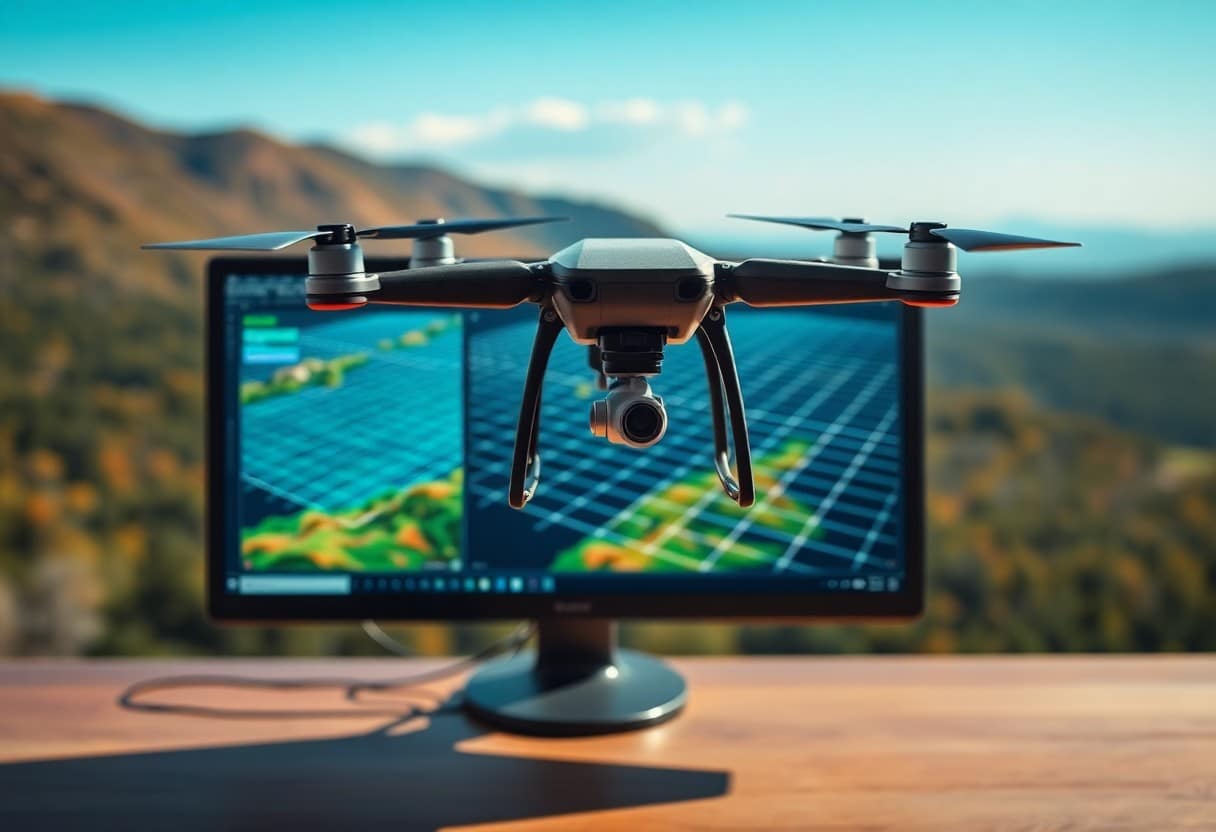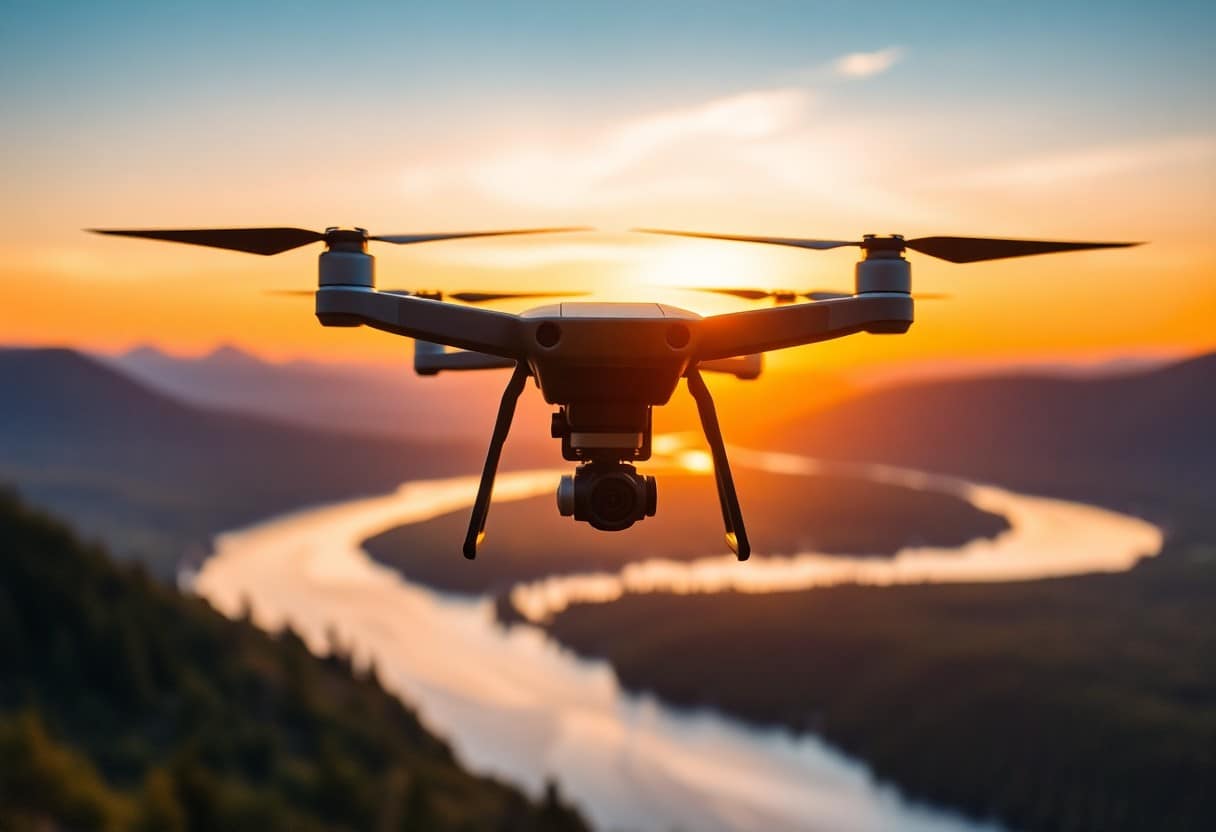How to practice basic drone controls for better flight performance?
In drone flight, masteringBasic controlIt is the key to improving your flight performance. Through systematic practice, you can enhance your ability to maneuver the drone, thereby improving your flight setup and reaction time. Whether it's choosing a safe practice environment or familiarizing yourself with various flight modes, these will have a direct impact on your flying experience and safety. In this article, we'll introduce you to some effective ways to help you maneuver your drone in a way that isMore stablerespond in singingefficientThe
Highlight the finishing touches:
- Understand flight control systems:Familiarize yourself with the principles of drone flight control and master the basic control modes.
- Use the simulator:Practice with the simulator to improve your maneuvering skills in a safe environment.
- Small area to fly:Start flying in a small area and slowly increase the distance and altitude to gain confidence.
- Check the equipment regularly:Check the drone's components before each flight to make sure they are working properly.
- Develop a flight plan:Plan your flight path in advance and set goals for purposeful practice.
- Learn to cope with unexpected situations:Practice how to handle out-of-control or unstable situations to enhance resilience.
- Shooting and Review:Analyze and improve your skills by reviewing your flights on video.
Understanding Drone Control Systems
Drone control systems are central to ensuring flight performance because they effectively manage the behavior of your drone in the air. By understanding these systems, you can better maneuver your drone and improve its stability and ability to cope with various airborne environments. The right control system will significantly impact the drone's handling experience and directly relate to your performance in combat.
Types of drones and how they are controlled
There are different types of drones, each with its own unique control style, and it is important to understand these differences in order to optimize your flight. Below are a few common types of drones and their control characteristics:
| Drone Type | control method |
| quadrotor | Stable control with multiple rotors |
| fixed wing | Flying by aerodynamics and lift. |
| Vertical take-off and landing (VTOL) | Combined fixed-wing and multi-rotor control |
| Mini Drone | Supports easy operation and convenience |
| Agricultural Drones | Focus on specific agricultural tasks with specialized control systems |
Knowing your drone type and understanding its control mechanisms will enable you to make informed decisions during flight.
The importance of controlling sensitivity
Control sensitivity is a key factor in ensuring stable flight. Too much sensitivity can cause the drone to overreact and make maneuvering difficult, while not enough sensitivity can make the drone react slowly and affect flight performance. You need to adjust the sensitivity according to different flight situations to ensure that you can meet the challenges at any time.
Sensitivity control should not be overlooked in flight. The proper sensitivity setting can make a big difference inComplex environmentIt provides you with better maneuverability and reduces the need forDue to instabilityRisks. Hypersensitivity may result inrunawayIf the sensitivity is too low, it may affect your response speed. To ensure optimal performance of your drone, it is important to adjust the appropriate sensitivity settings.
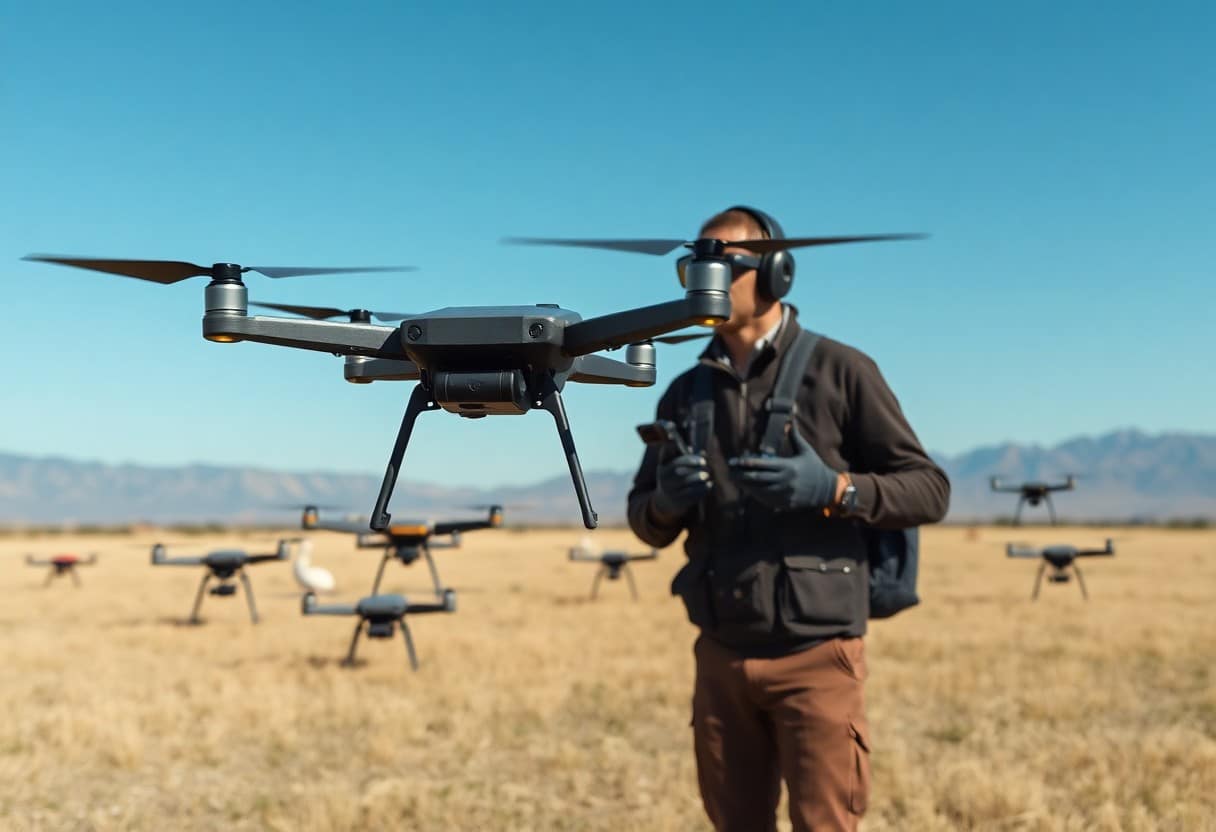
Development of basic maneuvering skills
When practicing basic drone handling skills, mastering theBasic ActionsIt is the key to improving your flight performance. Through repetition and experimentation, you can learn how to maneuver your drone in a variety of environments, increasing your understanding and confidence in the equipment.
Takeoff and Landing Techniques
Taking off and landing are some of the most basic and critical skills in drone operation. Make sure you choose aOpen and accessiblearea for takeoff and pay attention to the ground condition during landing to avoid theAccidental DamageThe
Hover and Stabilization Exercises
Hovering is a very important skill in drone operation, allowing you to enhance your sense of control over the equipment. When you are performingSuspension ExerciseBe careful to make small adjustments to the height and direction of the drone, which will not only help you improve stability, but also prevent the wind from interfering with your control.
During hovering and stabilization exercises, you must focus on mastering the drone'sResponse timeand its response to commands. Ensure that your drone is in a differentwind speedand environmental conditions, which not only improves your skills, but also reduces the risk of real-worldAccidental RisksThe following are some of the exercises you can do to improve your confidence and competence in difficult operations. Continuing these exercises will give you more confidence and competence in difficult operations.
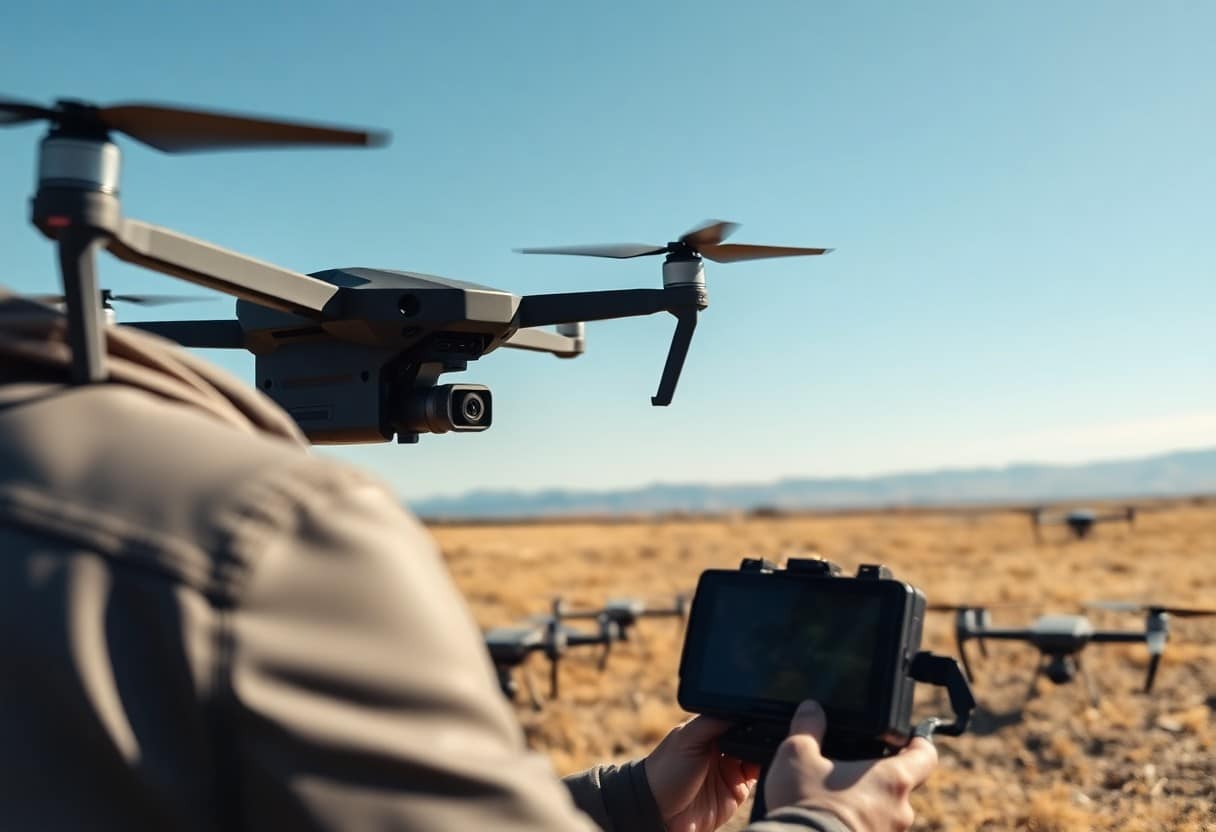
The Role of Simulators in Training
Simulators play a vital role in drone training by providing a safe environment where you can practice basic maneuvering skills without the risk of actually flying. Through simulators, you can repeatedly practice and master various maneuvers, which is very effective in improving flight performance. For more professional advice, check outHow to achieve movie quality through effective drone filming techniques?
Benefits of Flight Simulators
The great thing about using flight simulators is that they simulate real flying environments, allowing you to get a lot of hands-on experience without risk. Simulators are ideal for improving your flying skills as they help you learn coping strategies in different weather and environmental conditions, and improve your ability to react to emergencies.
Recommended Simulation Software
There are a number of flight simulation programs available on the market, some of the most popular include RealFlight, Liftoff and DRL Simulator. These programs not only provide realistic flight physics, but also include a variety of practice modes that allow you to work on individual skills to enhance your overall maneuverability.
For example, "RealFlight" simulator is designed for drone enthusiasts, offering a realistic control feeling and a rich selection of flying scenes; "Liftoff" is famous for its excellent physics engine and realistic drone environment, allowing you to challenge yourself in a variety of scenes; and "DRL Simulator" is highly respected by drone racing enthusiasts, with a DRL Simulator, on the other hand, is popular with drone racing enthusiasts and features a variety of tracks and race modes that allow you to not only hone your basic skills, but also improve your athleticism. These programs allow you to learn and master a variety of flying techniques in a safe environment, especially in theDifficult conditionsThe first thing you need to do is to build a solid foundation for your drone operation.
Real-world practice scenarios
In real-life practice scenarios, you can perform a variety of drills to improve your drone flying skills. These techniques will not only help you master the basic controls, but also improve your ability to react in different situations. For more information on how to improve your drone operations, seeFly a Drone with Confidence - 6 Steps for BeginnersThe
Flight practice in a controlled environment
Practicing in a controlled environment is an effective way to improve your skills. You can choose an open field that not only minimizes distractions, but also makes it easy to observe your flight performance. By setting markers and points, you can practice various maneuvers over and over again, improving your stability and control.
Add obstacles and wind conditions
In your practice, it willObstaclesrespond in singingWind ConditionsTaking this into account will help you adapt to the challenges of the real world. By flying in a variety of scenarios, you'll learn how to deal with the unexpected, which is crucial for future missions.
In consideringObstaclesrespond in singingWind ConditionsDuring practice, you can set up various obstacles, such as trees, buildings or other drones, which will improve your perception of distance and flight paths. At the same time, learn to maneuver the drone in different wind conditions, whether it's acontrary windorSide windsThe program is designed to help you develop your flexibility and increase the reliability and safety of your flights.
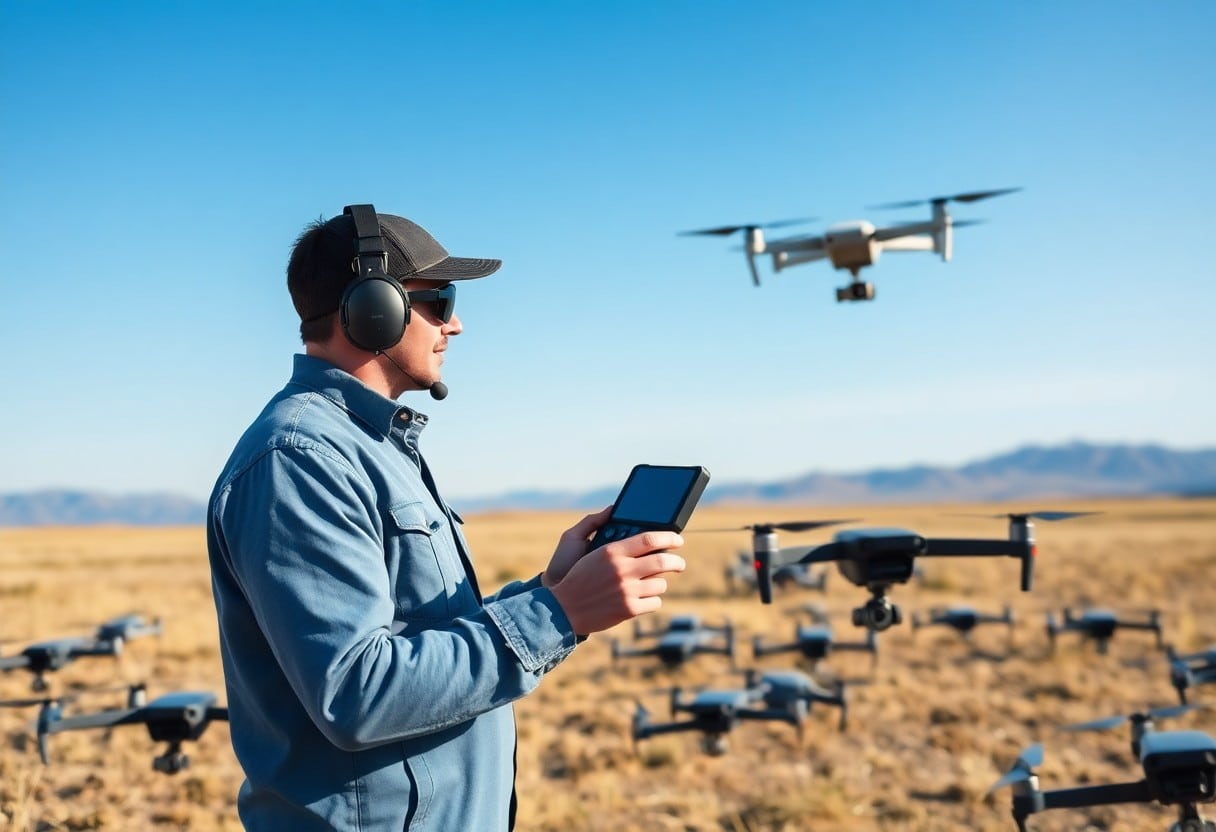
Analyzing Flight Performance
Understanding your flight data is key to improving your drone's performance. By analyzing your flight performance, you can identifyStrengths and WeaknessesIn addition, you can also develop a plan for improvement. When practicing, you can refer toThe Ultimate Guide - 7 Steps to Amazing Aerial PhotographyThis will help you to better control your drone and achieve optimal flight performance.
Key Performance Indicators for Evaluation
When you are analyzing flight performance, important performance indicators includeFlight TimeThe control accuracy andOperational StabilityThese measurements help you understand how the drone reacts and how it performs in different environments. These measurements help you understand how the drone reacts and how it performs in different environments, which in turn guides you in improving your operating techniques.
Adjust control based on feedback
Adjusting your drone's control settings based on flight feedback can effectively improve the quality of your flights. Such adjustments can include changing the flight pattern or control sensitivity to suit different flight conditions.
ThroughContinuous monitoring and adjustmentYou can be sure that your drone is operating at a level that meets your performance needs. If you find that a particular flight pattern is not working as expected, feel free to make the necessary adjustments to not only improve flight stability, but also to ensure that you are making the most of your flight.High Risk TasksSafety in the air. With practice, you'll gradually become more agile and confident in your flying skills.
Advanced Skills Improvement
After familiarizing yourself with the basic drone controls, you can further improve your performance with advanced techniques. These techniques will not only enhance your piloting skills, but will also provide you with a better ability to cope with different situations.
- Aim and set the ideal flight path.
- Familiarize yourself with the effects of wind speed and environmental factors.
- Deliberately improve agility in lifting and turning.
- Practice stable flight at different altitudes.
- Learn when to use the various flight modes.
| finesse | descriptive |
|---|---|
| Precision Aiming | Improved accuracy and obstacle avoidance through goal setting. |
| Wind Speed Assessment | Understanding the effect of wind speed on flight can improve flight stability. |
Mastering complex operations
Once you've mastered the basic flight controls, the next step in improving your skills is to start practicing complex flight maneuvers. These maneuvers include flips, sharp turns, and hovers, all of which require hand-eye coordination and a mental attitude.
Emergency Response Skills
Knowing how to respond to emergencies during flight is crucial for drone operators. Learning how to deal with malfunctions or obstacles quickly and safely will make your flight safer.
Emergency response skills include learning toQuickly determine the status of the droneThe following are some examples of how we have responded to the situation. In the face ofLow BatterymaybeNo Signal ConditionWhen the time comes, you need to make a quick decision on whether to let the drone return automatically or to manually maneuver it. Calmness and accurate judgment are essential at this time, and avoiding unnecessary damage is a priority for every operator.
How to Practice Basic Drone Controls to Improve Flight Performance
To improve your drone flying performance, regular practice of basic control skills is key. You can start by flying at low altitude in open spaces to familiarize yourself with throttle, direction and speed responses. Additionally, using a simulator to emulate various weather and environmental conditions will help you be more agile in real flight. Be sure to reflect on your experiences and lessons learned after each flight, as this will help you continue to improve and ultimately achieve mastery of your flying skills.
Frequently Asked Questions
Q: What is Basic Drone Control?
A: Basic drone control refers to the basic operations of maneuvering a drone, including takeoff, landing, hovering, and directional control. Mastering these basic operations is crucial to improving the flight performance of the drone.
Q: How do I choose a suitable practice environment?
A: The best environment for practicing is an open and clear area, away from people and obstacles. Make sure the area is clear for drone flight and avoid practicing in windy or poor weather conditions.
Q: What basic operations should I start practicing?
A: It is recommended to start with take-off and landing, followed by hovering, then directional control and turning. Gradually increase the level of difficulty, e.g. try different flight patterns and altitude changes.
Q: How can I improve the stability of my drone?
A: The key to improving drone stability is to carefully adjust the sensitivity of the controller and to adapt to different wind speeds. Proper fine-tuning and attitude control can significantly improve flight stability.
Q: Can I practice using a virtual simulator?
A: Yes, the Virtual Simulator is a very effective practice tool. It allows you to practice your flying skills in a safe environment and simulates different flying conditions and emergencies.
Q: How should I record my progress during practice?
A: You can review your progress by recording video of your flights, recording the time and results of each flight. This will help you understand your strengths and areas for improvement.
Q: What are some ways to avoid common mistakes in practicing?
A: Common mistakes can be avoided by preparing for the flight, making sure all parts of the drone are functioning properly, and by staying calm and avoiding aggressive maneuvers during the flight.
